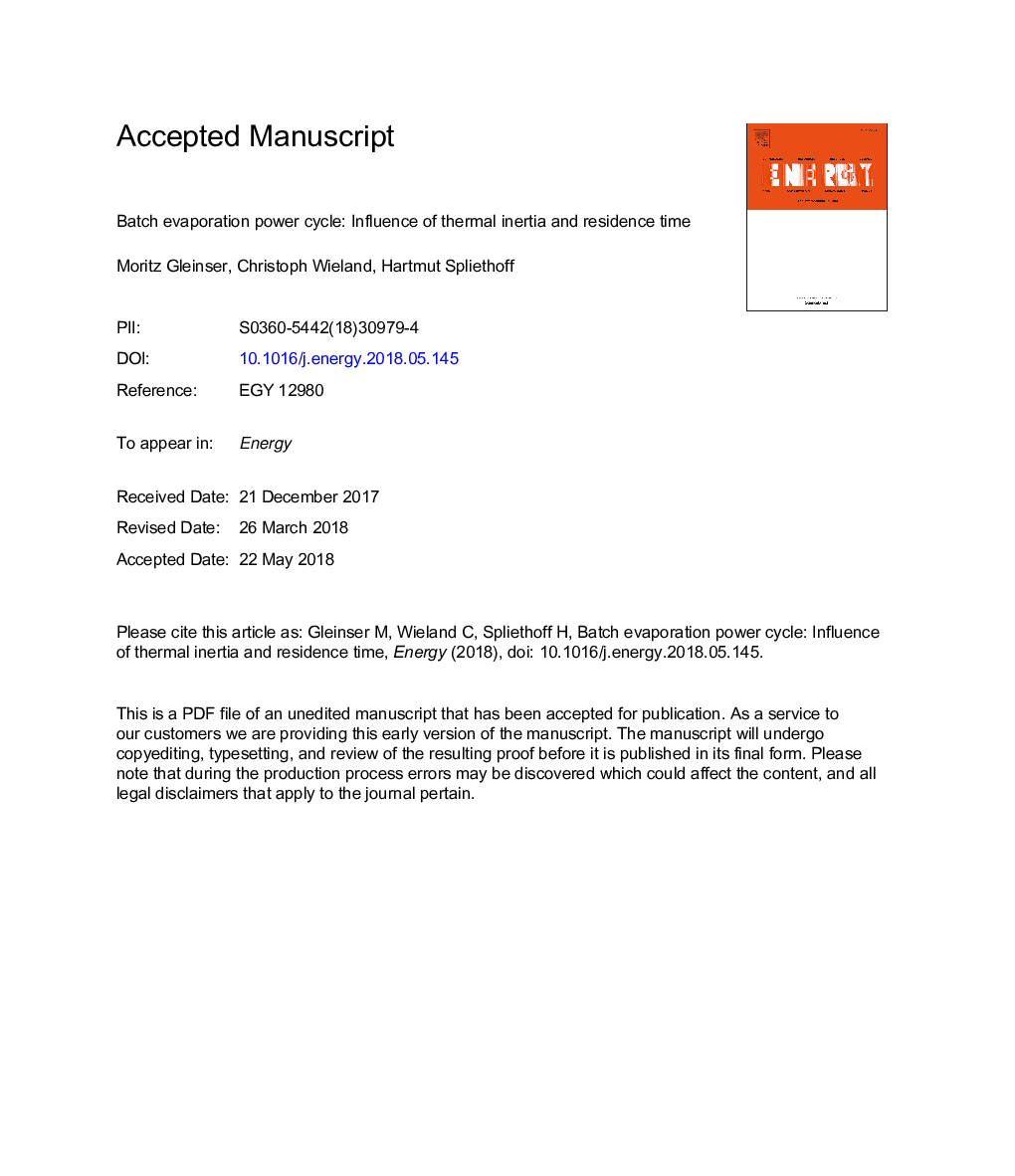| Article ID | Journal | Published Year | Pages | File Type |
|---|---|---|---|---|
| 8071316 | Energy | 2018 | 22 Pages |
Abstract
The transition in the energy market and the growing share of renewable energy sources have been boosting the research in new power cycles. For example, the concept of batch evaporation in the Misselhorn Cycle promises to increase the overall efficiency in low-temperature applications and therefore saves resources. In this paper, a dynamic evaporator model was extended in order to prove the feasibility of the Misselhorn Cycle despite its transient character. In this context, the thermal capacity of the wall material as well as the residence time of the heat source medium were added. The previous, underlying model predicted an improved system efficiency for the Misselhorn Cycle of about 50% compared to an Organic Rankine Cycle (ORC) at 100Câ. Initially, the results of the extended model showed a negative influence of the inertial effects on the possible net power output (advantage over ORC only 10%). However, an unheated discharge phase and reduced dimensions of the heat exchanger could compensate these drawbacks and achieved results (about 40% better than ORC) in the same range as the previous, simple model predicted. These findings prove the general practical feasibility of the Misselhorn Cycle.
Related Topics
Physical Sciences and Engineering
Energy
Energy (General)
Authors
Moritz Gleinser, Christoph Wieland, Hartmut Spliethoff,
